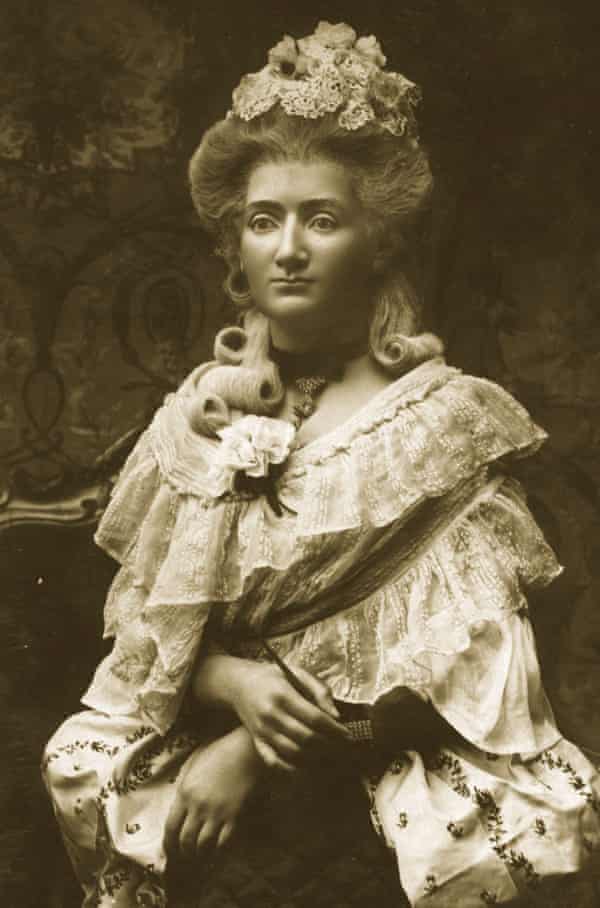Little by Edward Carey review – vivid tale of Madame Tussaud
This rich, engrossing novel explores how a penniless Swiss orphan caught up in the French Revolution came to found the famous waxworks museum
Sat 10 Nov 2018 07.30 GMT
At one point in Edward Carey’s rich, engrossing novel, a young French princess hires an art teacher. It is 1778 and the teacher, who works at a popular new wax museum in Paris, has never seen anything like Versailles, with its vast rooms “filled with expensive, distinguished, furious objects”; the princess, now 14, has clearly never been properly taught. At their first lesson she throws open a room festooned with bad drawings. “They’re mine!” she exclaims. “I drew them.” The teacher, nicknamed Little because she is so small, real name Marie Grosholtz, eventually Madame Tussaud, weighs up her options. Then she says, “You do not … look, really, do you?”
So they set about looking. And the princess learns that the act of looking well, at bodies in particular, has power – something Marie and her own mentor Doctor Curtius, working all hours of the day to keep up with demand for waxwork replicas of the good citizens of Paris, have already discovered. To look well, for Carey, an illustrator as well as a novelist, is to see how emotion and meaning inhere in all objects, giving them independent life. From his first adult novel, 2000’s Observatory Mansions, in which a man builds a secret museum of stolen items for which the only criteria for inclusion is that they are loved, to his Iremonger trilogy for children, which begins in a house surrounded by heaps of objects, Carey builds worlds where things take on supposedly human characteristics and humans are portrayed as animated things. To actually see, he seems to argue, is an act of love, a moral act, an act of empathy, a kind of faith.

The germ of Little was present in Observatory Mansions in other ways, too. That novel’s collector of loved objects, Francis Orme, worked for a while at a waxworks museum. Little is Carey’s retelling of how a penniless Swiss orphan founded a London museum full of effigies that still welcomes 2.5 million visitors a year (and, for a few months, once employed a writer-to-be called Edward Carey). Early on, Curtius, whose job in Berne is to render diseased body parts in wax and tout them around the city as graphic public health warnings, asks his recently deceased housekeeper’s child Marie to help him to cast a head. The subject is Curtius’s boss, a well-known surgeon. But Marie notes how, after two straws have been placed up the man’s nose so that he can breathe; after his face has been smoothed with oil, then with plaster, to make a cast, and after the cast is taken away, underneath there is only another human face, “humbled and vulnerable” – and equal. The surgeon understands this; when he sees the success Curtius’s heads are achieving, he cancels his wages, forcing Curtius and Marie to flee to Paris.
Presenting everyone as equal doesn’t sell, as the increasingly forceful French widow to whom Curtius allies himself insists: “We do the fine people, the beautiful and the brilliant.” And so Rousseau, Diderot, Voltaire, Robespierre and Louis XVI are added to the collection. Curtius himself is more interested in the people who are not fine – the murderers and castaways, the criminals and misfits – though, as the Revolution takes hold, it becomes increasingly unclear who’s who. Curtius and Marie cast them all.
Little is full of grief, but also full of love. Marie is not afraid to feel strong emotions, however inconvenient or even grotesque they might be, and to act on them. To name, here, to speak up, is as important as to see, for this is a feminist novel told in Little’s own voice. It is her life from cradle to old age “written by herself” and “drawn by herself”: Marie’s pencil sketches of people and parts of people and the occasional loved object appear throughout. Art is a compulsion, she finds, a self-statement, a claim on the world.
But it can also be self-betrayal. While at Versailles, she makes, in secret, wax heads of the royal family. She looks at her likeness of Marie-Antoinette, and is amazed. “There’s the queen, but not only she: there’s Marie Grosholtz, too, both alive in that head. The moment I understood this, I couldn’t stop. It was all I wanted to do.” It’s an insight that undermines Marie and Curtius’s insistence that their waxworks are only mirrors, “newspapers” objectively reporting on the state of the world. “Wax never lies”, says Marie.
Perhaps not, physically, but there are other sorts of lies, and an increasingly leery Parisian public knows it. This is the dilemma of the war photographer: a record only, or a kind of prurience? Can looking ever be neutral?
Occasionally, Carey loses faith in the extraordinary potency of his material, making insights that arise of their own accord (the equalising nature of waxworks, for instance) too explicit and neat. Some characters are less complex than they could be. But at its best this is a visceral, vivid and moving novel about finding and honouring one’s talent; about searching out where one belongs and who one loves, however strange and politically fraught the result might be.
• Aida Edemariam’s biography The Wife’s Tale is published by 4th Estate. Little is published by Aardvark Bureau.
THE GUARDIAN


No comments:
Post a Comment